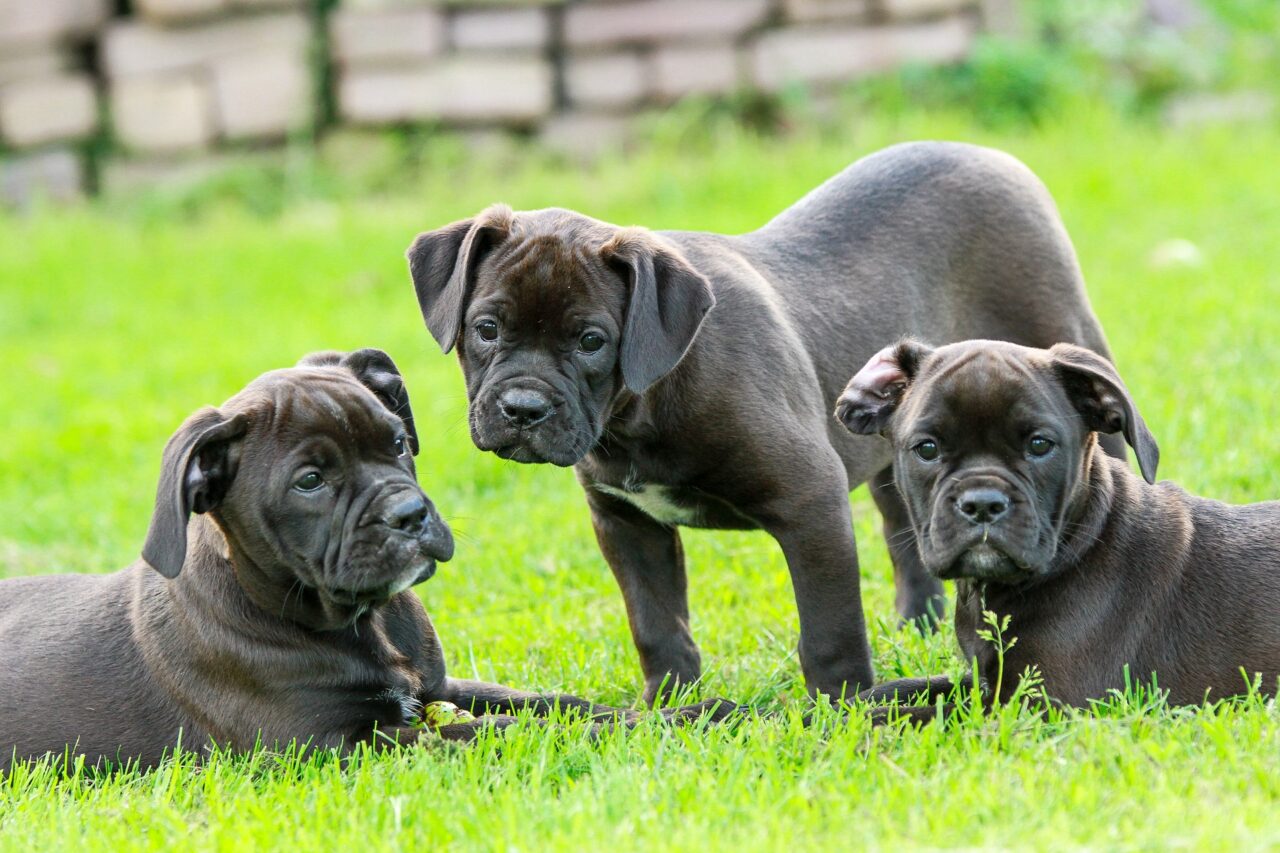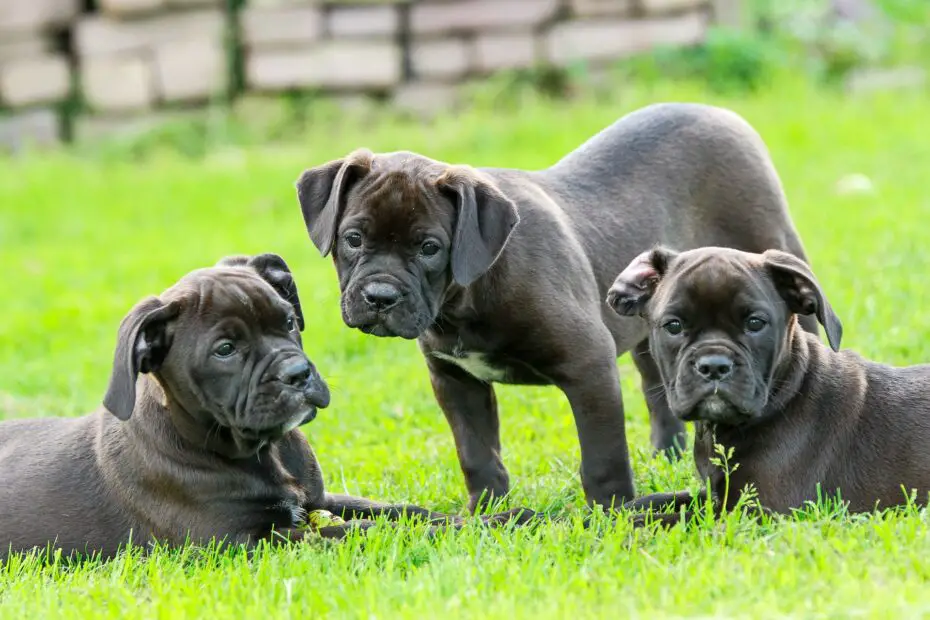The bulldog is a rare breed of dog that manages to be both adorable and tough. When considering a dog as a pet, a bulldog is a great option. Bulldogs are one of the brachycephalic dog breeds, so they have special needs as young children. Here you will read about how to care of bulldogg puppies.
If you’ve recently acquired a bulldog puppy and are concerned about the health of your new family member, keep reading to learn more about some of the most crucial considerations you’ll need to make.
You may also want to read about boxer puppies.
Feeding bulldogg puppies
The breeder should provide you with a written diet sheet that details the types of food, amounts, and feeding schedules used for your puppy. Maintain this diet for a few days, and then transition him to the food you intend to feed him gradually. Make sure to give them the right food.
If you want to give your new puppy the best start in life, proper nutrition is essential. At this point in his life, the consequences of any mistakes he makes will be significant and long-lasting. To grow and develop normally, his diet must supply all the nutrients he needs, and do so in the right amounts and proportions.
Avoid giving your puppy raw meat or spoiled food. The best value and best nutritional balance can be found in commercially prepared pet food, making it the safest diet option.
Bulldogg puppies, due to their rapid growth and active lifestyle, require a lot of calories. However, their young size means that they cannot consume a lot of food at once. Their diet must provide all the necessary nutrients in a relatively small volume, and they must be fed several small meals per day.
It’s not as hard as you might think to figure out how to feed your puppy. Providing a balanced and highly digestible diet that he enjoys and thrives on is the key to successfully rearing healthy bulldogg puppies, and growth diets remove all the guesswork.
Your puppy’s feeding schedule should be based on his age and breed. The health of your puppy is the best barometer of how much food it needs.
A puppy should be given 15–20 minutes to eat each time. Any leftovers should be thrown out after 15 minutes, and new food should be served.
While a puppy’s diet should still include some milk after he has been weaned, it is no longer necessary. Some canine and canine adolescent species have difficulty digesting the sugar lactose, which is found in milk.
Bones are a good source of calcium and phosphorus, and they also provide a workout for your jaw muscles when you chew on them. Instead of feeding your puppy bones, consider purchasing high-quality chew treats from a pet store.
Give your puppy his own clean bowls for food and water. One must always have access to clean water.

Training bulldogg puppies
You and your puppy will enjoy life more if he is trained properly. You have the role of a pack leader who must enforce discipline upon him, and he will naturally comply. In time, he will learn from his training what you expect of him and how to fulfill those needs. Investing some time and energy into this will be more than rewarded by having a well-behaved dog as a companion.
Bulldogg puppies raised in a clean, caring environment have a natural desire to follow their owners’ lead when it comes to cleanliness, making house training a breeze. As soon as you bring your puppy home, you should start training. If a regular routine isn’t established right away, it can delay progress in training. It will take time and persistence.
Puppies have to go potty and defecate frequently because their organs are still developing. If you have a secure backyard, you should take him there whenever he needs to go potty. Also, after each meal and any extended time spent indoors, take him to the same area to get some fresh air. Make it a point to accompany him to the event and remain there until he has finished performing; then, give him a lot of compliments.
Don’t scold him every time something goes wrong. There will be more chaos and panic as a result of this. If he makes a mistake, you shouldn’t “rub his nose in it.”
Primary Education The puppy will need to learn the basics of obedience training from you. To make any progress in training, he must first recognize his name and understand the meaning of the word “no.”
Puppy walks will be possible after his vaccinations are finished. He needs to be on a leash at all times when you take him out in public so that you can keep him under control. Before taking him for his first walk, get him accustomed to wearing his collar and leash.
Now that he’s comfortable with the leash, you can start teaching him the basics. The training program should involve the whole family. Short words with distinguishable vowels should be used as commands. Heel, sitting, coming, and lowering oneself to the ground are the first four necessities. It’s important to issue instructions that are easy to understand and consistent.
When he does something right, show him some love by petting him. Keep in mind that a food reward is not required during training. Instead of punishing him, withhold the reward until he obeys the command. Unless you want him to associate the command with negative consequences, you should avoid using punishment.
In order to further your puppy’s training, you may eventually consider enrolling in an obedience class for puppies or dogs. An experienced teacher can also help you get past obstacles that have plagued Adminsen. As soon as your puppy has finished his or her vaccinations, you can enroll him or her in puppy kindergarten. You and your puppy will have a great time at these classes, and he will benefit from meeting other dogs and their owners.
Grooming bulldogg puppies
If you want your dog to always look and feel his best, regular grooming is a must. You can save yourself a lot of heartache in the long run if you start your puppy off on the right paw and introduce him to the grooming routine early on.
Dogs should be washed only when they are dirty or per your vet’s instructions. It’s important to either do this when the weather is nice or to keep him inside so he doesn’t get too cold. Puppies, especially newborns, have unique needs. Your puppy should never be exposed to common cleaning products. When treating your dog, only use products that are specifically made for canines. A puppy’s bedding should be aired out and washed whenever he is bathed. It goes without saying that this is something you should be doing in between every bath as well.
If you are concerned about any abnormalities, such as bumps, cuts, or parasites, you can do a thorough inspection of his coat and skin while you are grooming him.
Look for signs of infection or discharge in his eyes, ears, wrinkles, and tail pocket.
Although you shouldn’t have any issues while he’s young, it’s still a good idea to get your puppy used to having his mouth opened frequently. This training will come in handy if and when you need to give him an oral dose of medication or brush his teeth. At the same time, you can become accustomed to your puppy’s regular mouth structure. The gums should be a healthy pink color, and the teeth should be free of plaque and tartar. You should also start the process of acclimating your dog to having his teeth brushed now. Plaque and halitosis can be mitigated by doing this.
Deposits may form at the gum line and the tooth roots as he ages. Your veterinarian can get rid of these for you.
Similarly, you may need to regularly trim your puppy’s nails. When a dog is regularly exercised on hard surfaces, its nails wear down to about the correct length, reducing the frequency with which they require attention. Puppy paws should be handled frequently beginning at a young age. This prepares him for visits to the vet or groomer in the future with less anxiety.
